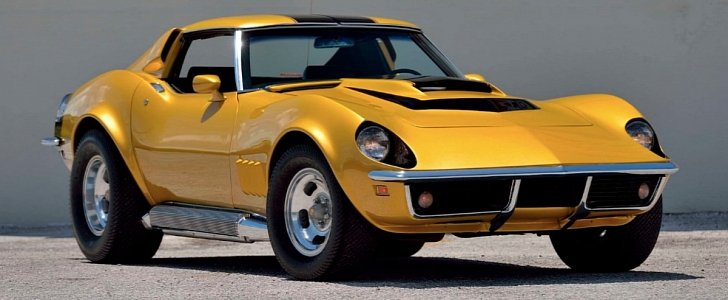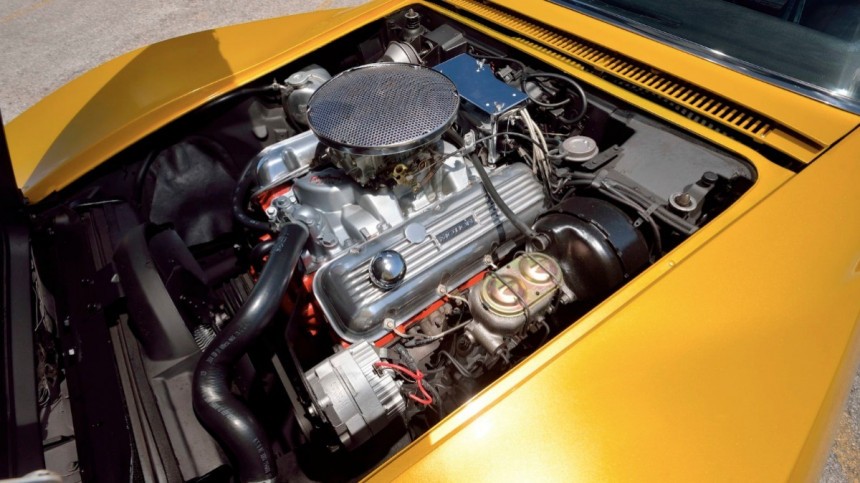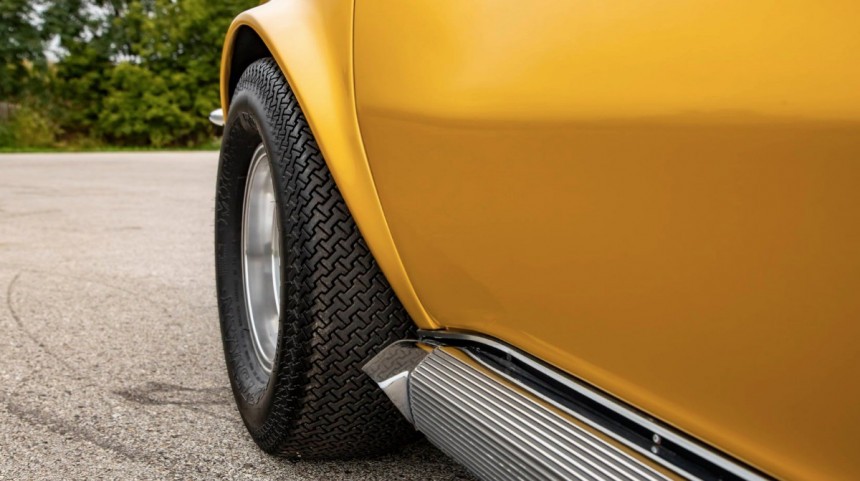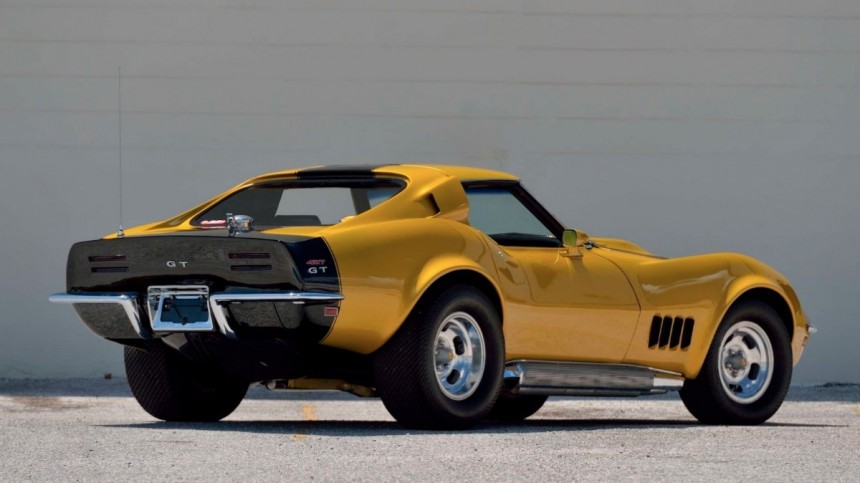1960s Chevrolet Corvettes are cool even in stock form, and if you modify one, you run the risk of ruining it. But that certainly isn’t the case with this rather special Baldwin Motion Corvette built in 1969, one of only ten examples made.
Its creation was the result of a joint effort between Motion Performance and Long Island-based Baldwin Chevrolet, and it really has a lot going for it. It’s called the Chevrolet Corvette Baldwin Motion Phase III GT and the key part of its name is the Phase III bit.
That means it was one the most powerful and extreme vehicles to result from this collaboration. It packed an L71 427 cubic inch V8 (the original the car came with) modified to make anywhere from 430 to 530 horsepower, according to some reports, since it was breathed upon by Motion Performance. We can spot the custom Motion Performance valve cover, the Edelbrock intake manifold, as well as the four-barrel Holley carb.
It is hooked up to a Muncie M21 4-speed manual transmission, the factory gearbox the car came with before it went in to be modified.
Its claimed quarter-mile time was 11.5 seconds, so it probably has closer to 500 horsepower - otherwise it wouldn’t be able to match this claim. And back in the day, when you purchased the car, it came with a guarantee that it would be able to match this claim.
It certainly has more power than a regular Corvette of the era, so those extra-wide rear tires are not there just for show - they are required to help it put the power down. But they don’t look out of place thanks to the flared wheel arches.
But the bulging arches are just the start of the exterior visual modifications. The car also features a functional hood scoop, surprisingly well integrated fixed headlights (the original had flip-up lights that have been removed), noticeable factory side exhausts, slit rear lights, custom side slats, side scoops on the B-pillar and unique looking slanted fastback-style rear glass.
It must be mentioned that this particular car is the only Phase III series car that has the Shelby-style side scoops, making it unique even among others of its kind. The wheels are also special, featuring custom rims by Motion Performance and cool looking Mickey Thompson sportsman tires - those fat rear tires really give the car aggressive look.
This car really pops visually, and most of that pop is comes from its wonderful Candyapple Gold and Black two-tone paint scheme. The black accents are incredibly clever on this car, highlighting some shapes without feeling like too much - they accentuate the pert rear end, the hood bulge and the middle of the roof and it all looks really pleasant and well done.
There’s more to this car than just facts about its modifications and performance and there’s a reason why only ten were ever created. It came just before the 1970s energy crisis, at a time when the U.S. Government was aiming to make all cars cleaner and more frugal, the reason why it enforced the Clean Air Act in 1970. Based on this, the Government was able to sue Motion Performance and ultimately won and forced the shop to stop making its delicious modified Corvettes in 1971.
That makes this particular example, a well documented, pristine matching-numbers car, that was on magazine covers back in the day, worth well in excess of $200,000. It last changed hands in 2005 for $231,000, and it’s set to go under the hammer again in January 2020 when it is expected to fetch more than it did nearly 15 years ago.
That means it was one the most powerful and extreme vehicles to result from this collaboration. It packed an L71 427 cubic inch V8 (the original the car came with) modified to make anywhere from 430 to 530 horsepower, according to some reports, since it was breathed upon by Motion Performance. We can spot the custom Motion Performance valve cover, the Edelbrock intake manifold, as well as the four-barrel Holley carb.
Its claimed quarter-mile time was 11.5 seconds, so it probably has closer to 500 horsepower - otherwise it wouldn’t be able to match this claim. And back in the day, when you purchased the car, it came with a guarantee that it would be able to match this claim.
It certainly has more power than a regular Corvette of the era, so those extra-wide rear tires are not there just for show - they are required to help it put the power down. But they don’t look out of place thanks to the flared wheel arches.
It must be mentioned that this particular car is the only Phase III series car that has the Shelby-style side scoops, making it unique even among others of its kind. The wheels are also special, featuring custom rims by Motion Performance and cool looking Mickey Thompson sportsman tires - those fat rear tires really give the car aggressive look.
This car really pops visually, and most of that pop is comes from its wonderful Candyapple Gold and Black two-tone paint scheme. The black accents are incredibly clever on this car, highlighting some shapes without feeling like too much - they accentuate the pert rear end, the hood bulge and the middle of the roof and it all looks really pleasant and well done.
That makes this particular example, a well documented, pristine matching-numbers car, that was on magazine covers back in the day, worth well in excess of $200,000. It last changed hands in 2005 for $231,000, and it’s set to go under the hammer again in January 2020 when it is expected to fetch more than it did nearly 15 years ago.













